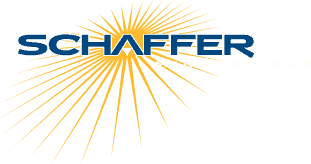There is a saying here at Schaffer Manufacturing that metal fabrication should not be a “black box” operation. In other words, you don’t simply feed in the print and out comes the part. If a supplier is brought on as a fabrication specialist, an OEM deserves engineering-based ideas that optimize a part for production. In fact, when a fabrication supplier doesn’t routinely provide feedback about manufacturability engineering, the customer is missing critical opportunities.
Bottom line: You should expect the Schaffer engineering capability to help drive outcomes ranging from lower costs and faster turnaround . . . to improved component quality, integrity and performance.
Schaffer engineering involvement on customer projects includes: early collaboration at the design/prototype stage; enhancing a “final” print to optimize manufacturability; digitizing old prints to take full advantage of modern 3D technology; or working from a designer’s 3D CAD model to reverse-engineer an optimized, fabrication-ready manufacturing print.
In other cases, engineering and production outsourced to Schaffer involves dealing with a particularly complex or challenging aspect of the overall fabrication – not necessarily the entire project – that exceeds the manufacturer’s in-house capabilities.
Here are a few key takeaways from Schaffer experiences working with fabrication customers to optimize part design and engineering:
- Frequently, engineering is a capability that the customer executes very capably in-house. Schaffer is there to complement, not replace, the OEM’s own operation. We are an extension of the manufacturer’s engineering department.
- At same time, customers need to be confident that Schaffer can take the engineering ball and run with it. If not, the OEM might as well handle the work internally.
- One of the best scenarios for real engineering progress and best-possible outcomes on the manufacturing floor is the willingness to share and integrate our respective areas of expertise. Success always comes down to total transparency, collaboration and communication.
- This collaboration should be ongoing. In the context of metal fabrication, finding the best way to cut, weld and assemble is a continuous improvement project. We know from lots of experience that engineering can create improvements, value and new payoffs reflected in successive rounds of prints and production.




